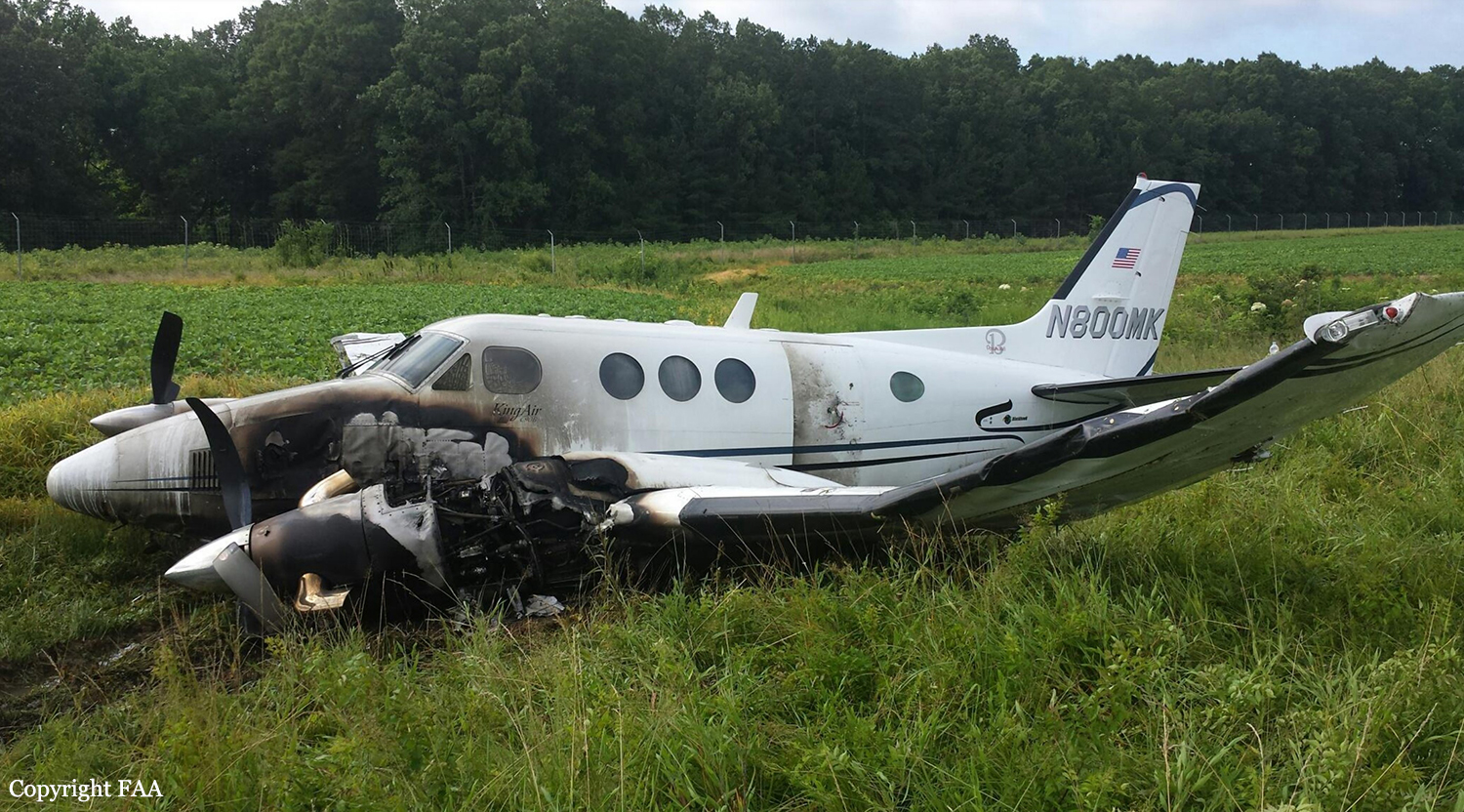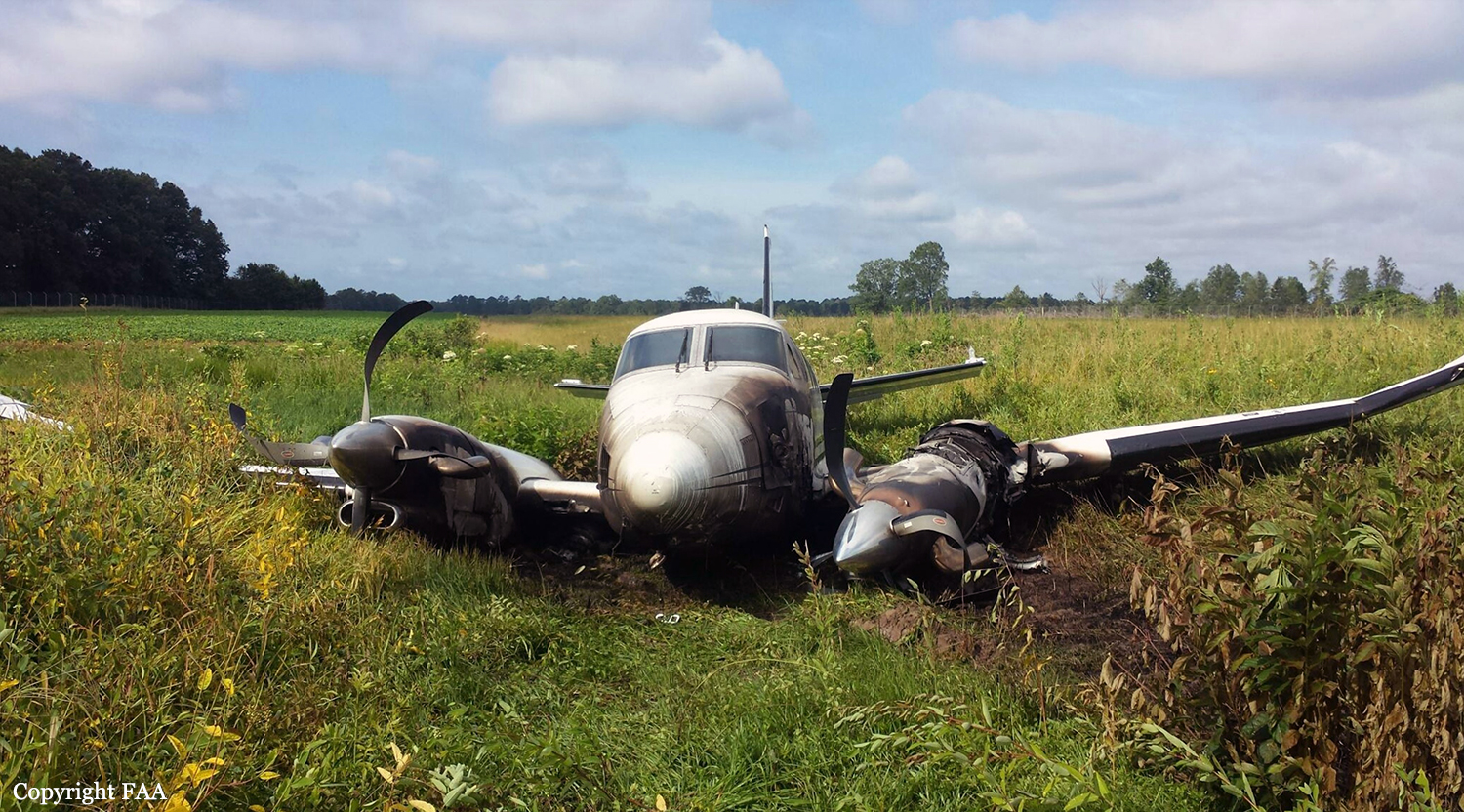Country
Crash of a Beechcraft B90 King Air in Laguna del Sauce: 10 killed
Date & Time:
Mar 19, 2015 at 2038 LT
Registration:
LV-CEO
Survivors:
No
Schedule:
Laguna del Sauce – San Fernando
MSN:
LJ-454
YOM:
1969
Crew on board:
2
Crew fatalities:
Pax on board:
8
Pax fatalities:
Other fatalities:
Total fatalities:
10
Aircraft flight hours:
10319
Circumstances:
The twin engine airplane departed Laguna del Sauce Airport on a charter flight to San Fernando Airport near Buenos Aires, carrying eight passengers and two pilots. Shortly after a night takeoff from Laguna del Sauce Airport runway 01, the aircraft entered a controlled descent and crashed in shallow water some 2 km northwest of the airport, bursting into flames. The aircraft was destroyed by a post crash fire and all 10 occupants were killed.
Probable cause:
The accident resulted from impact with the ground without loss of control due to the combination of the following factors:
- The aircraft's climb profile did not meet the manufacturer's recommendations for speed and rate of climb,
- The center of gravity was outside the flight envelope,
- The total weight of the aircraft at the time of the accident was 124 kilos above the MTOW,
- Both pilots were tired due to a lack of rest time and a shift of more than 18 hours,
- The captain did not fly this type of aircraft since 1997 and was used to flying jets,
- The copilot had no experience on this type of aircraft despite being in possession of a valid license,
- The pilots' knowledge and understanding of the aircraft's systems and operation was inadequate,
- The operational checklists found on board the aircraft were not up to date,
- The pilots flew for the first time at night on this aircraft and for the second time together,
- The aircraft was operated under commercial rules on behalf of a travel agency while it could only fly privately,
- The instructor in charge of the training of both pilots and the person in charge of scheduling the flight refused to be questioned by the board of inquiry,
- An excessive workload for the crew and a lack of rest contributed to the pilots' loss of situational awareness,
- Both engines' compressors were running at low speed on impact,
- Both engines' propellers were turning at a speed close to low pitch,
- No mechanical anomalies were found on the engines and their components,
- Insufficient qualifications of the crew to fly on this type of aircraft,
- Pressure from the aircraft's owner to complete the flight,
- Crew fatigue and stress,
- Inadequate maintenance of the aircraft.
- The aircraft's climb profile did not meet the manufacturer's recommendations for speed and rate of climb,
- The center of gravity was outside the flight envelope,
- The total weight of the aircraft at the time of the accident was 124 kilos above the MTOW,
- Both pilots were tired due to a lack of rest time and a shift of more than 18 hours,
- The captain did not fly this type of aircraft since 1997 and was used to flying jets,
- The copilot had no experience on this type of aircraft despite being in possession of a valid license,
- The pilots' knowledge and understanding of the aircraft's systems and operation was inadequate,
- The operational checklists found on board the aircraft were not up to date,
- The pilots flew for the first time at night on this aircraft and for the second time together,
- The aircraft was operated under commercial rules on behalf of a travel agency while it could only fly privately,
- The instructor in charge of the training of both pilots and the person in charge of scheduling the flight refused to be questioned by the board of inquiry,
- An excessive workload for the crew and a lack of rest contributed to the pilots' loss of situational awareness,
- Both engines' compressors were running at low speed on impact,
- Both engines' propellers were turning at a speed close to low pitch,
- No mechanical anomalies were found on the engines and their components,
- Insufficient qualifications of the crew to fly on this type of aircraft,
- Pressure from the aircraft's owner to complete the flight,
- Crew fatigue and stress,
- Inadequate maintenance of the aircraft.
Final Report:


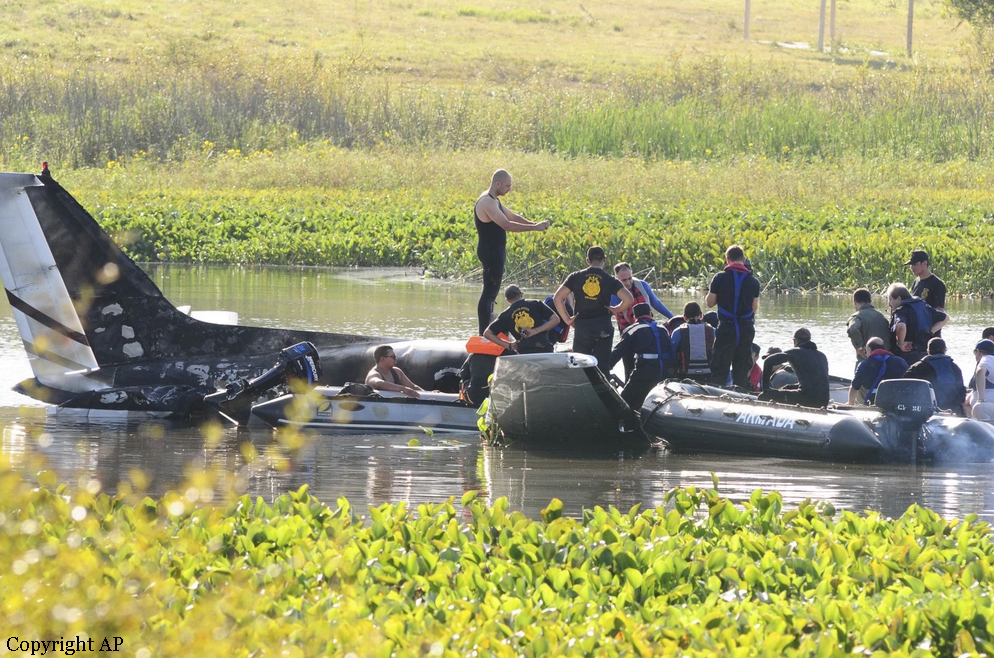

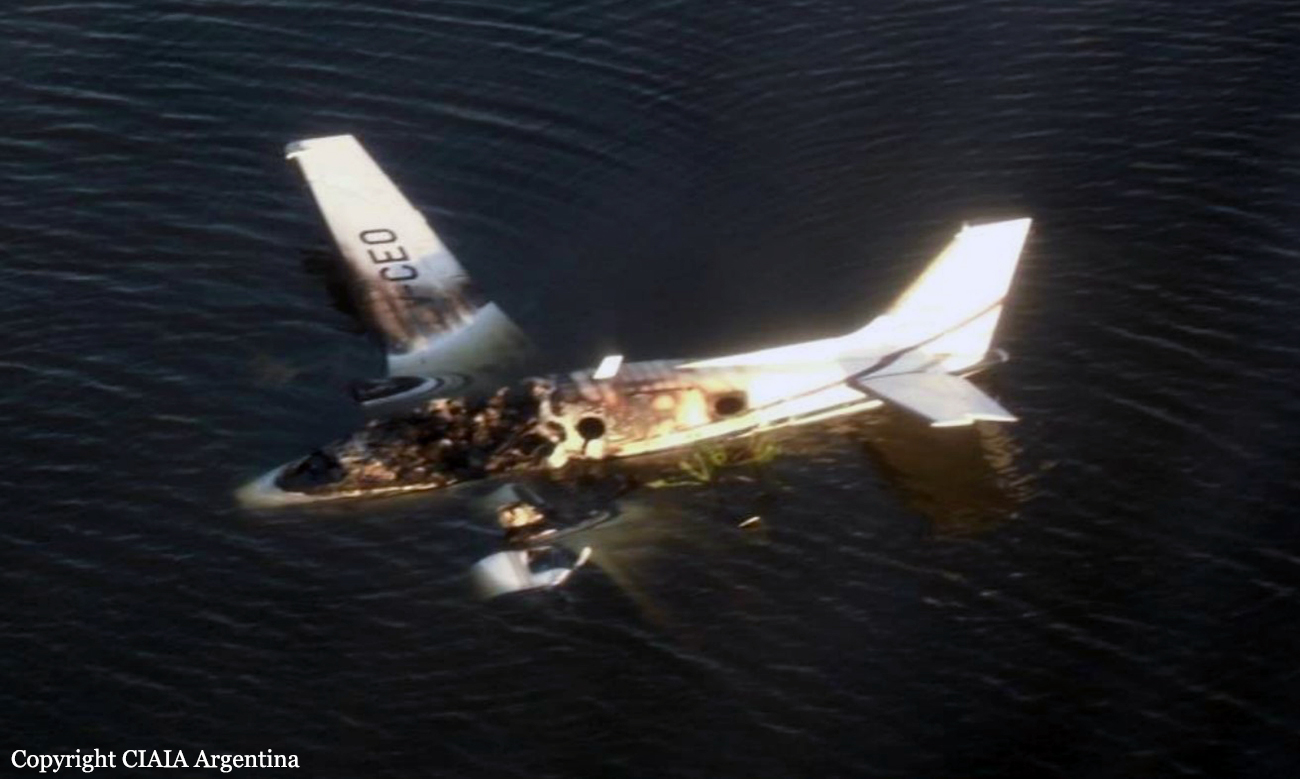

Crash of a Beechcraft C90 King Air in Oneida
Date & Time:
Sep 25, 2014 at 1510 LT
Registration:
N211PC
Survivors:
Yes
Schedule:
Oneida - Oneida
MSN:
LJ-910
YOM:
1980
Crew on board:
1
Crew fatalities:
Pax on board:
0
Pax fatalities:
Other fatalities:
Total fatalities:
0
Captain / Total hours on type:
448.00
Aircraft flight hours:
7203
Circumstances:
According to the pilot's written statement he departed runway 05 and the airplane veered "sharply" to the right. The pilot assumed a failure of the right engine and turned to initiate a landing on runway 23. Seconds after the airplane touched down it began to veer to the left. The pilot applied power to the left engine and right rudder, but the airplane departed the left side of the runway, the right main and nose landing gear collapsed and the airplane came to rest resulting in substantial damage to the right wing. The pilot reported that he had failed to configure the rudder trim prior to takeoff and that there were no preimpact mechanical malfunctions or anomalies that would have precluded normal operation.
Probable cause:
The pilot's failure to properly configure the rudder trim for takeoff and his failure to maintain directional control during a precautionary landing, which resulted in a runway excursion and collision with terrain.
Final Report:
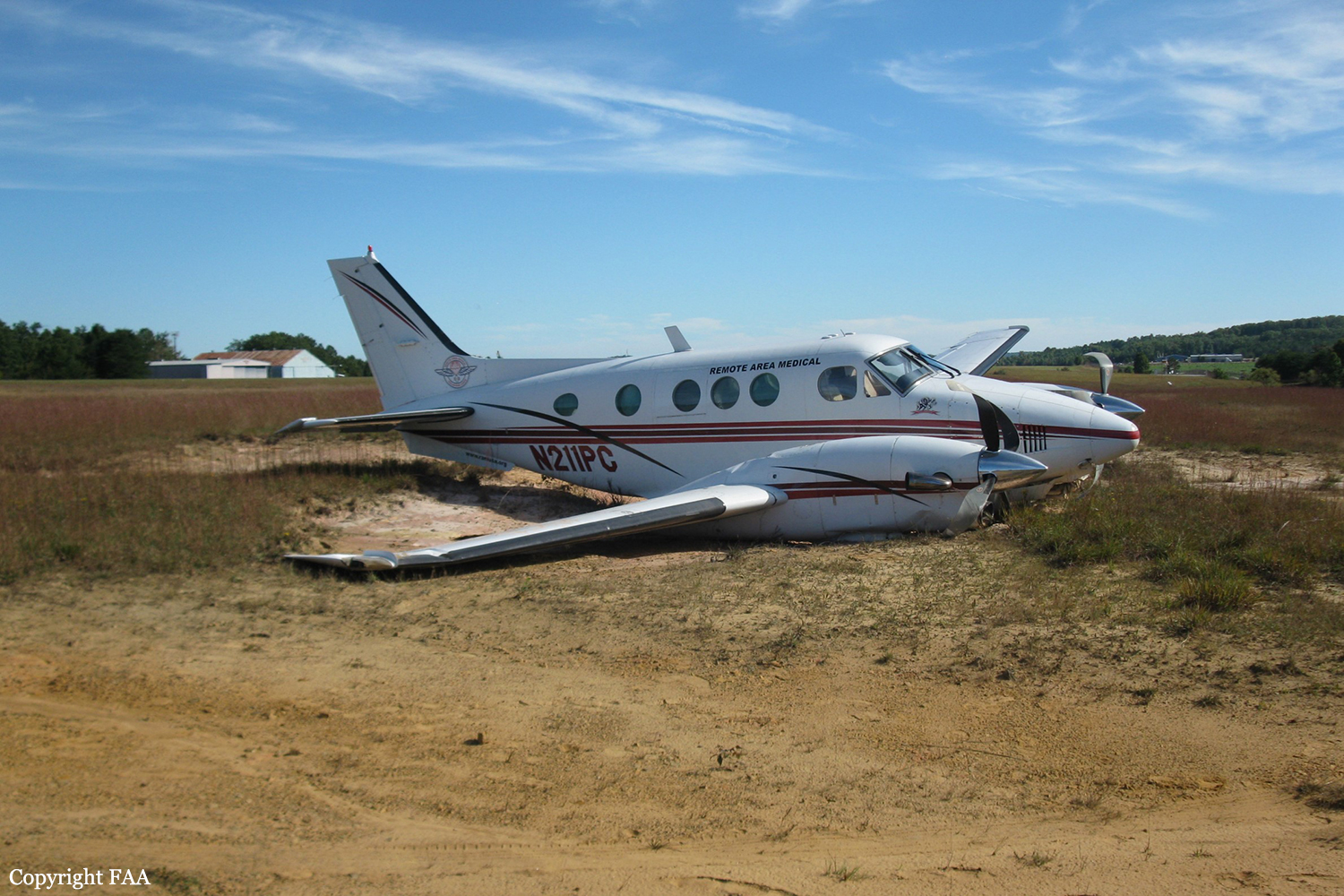
Crash of a Beechcraft E90 King Air in Casigua El Cubo: 3 killed
Date & Time:
Sep 19, 2014
Registration:
YV1537
Survivors:
No
Schedule:
Anaco – Santa Bárbara del Zulia
MSN:
LW-309
YOM:
1979
Crew on board:
2
Crew fatalities:
Pax on board:
1
Pax fatalities:
Other fatalities:
Total fatalities:
3
Circumstances:
En route from Anaco to Santa Bárbara del Zulia, the twin engine aircraft crashed in unknown circumstances by a wooded area located near Casigua El Cubo. The aircraft was destroyed by a post crash fire and all three occupants were killed. It is believed that the aircraft was engaged in an illegal contraband flight.
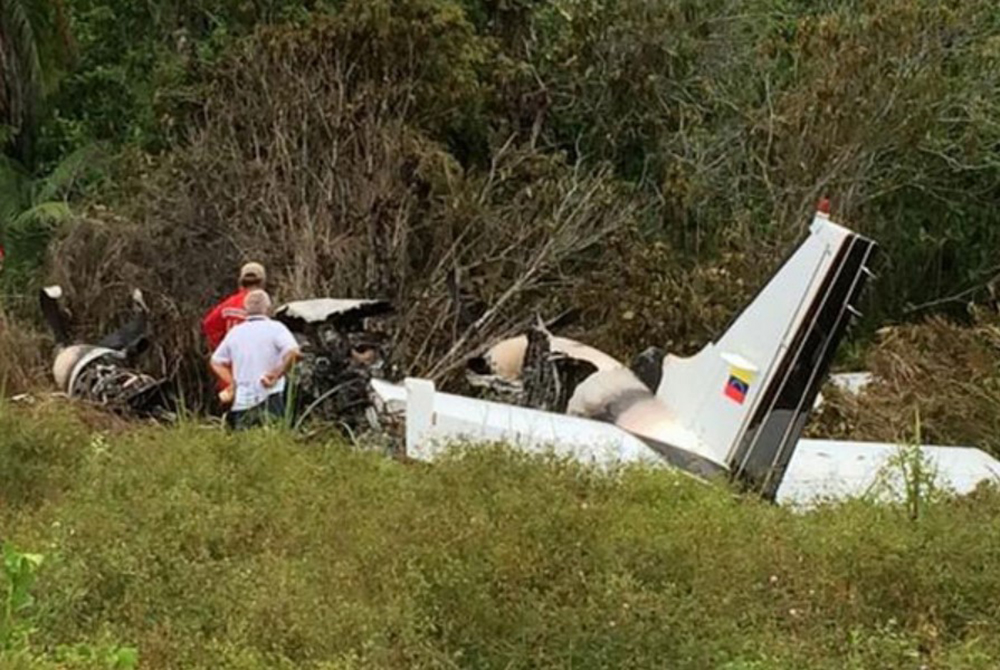
Crash of a Beechcraft C90A King Air in Houston
Date & Time:
Jun 25, 2014 at 0750 LT
Registration:
N800MK
Survivors:
Yes
Schedule:
Memphis - Houston
MSN:
LJ-1460
YOM:
1997
Crew on board:
2
Crew fatalities:
Pax on board:
3
Pax fatalities:
Other fatalities:
Total fatalities:
0
Captain / Total hours on type:
223.00
Copilot / Total hours on type:
700
Aircraft flight hours:
2708
Circumstances:
On June 25, 2014, about 0750 central daylight time, a Raytheon Aircraft Company C90A, N800MK, was substantially damaged following a runway excursion during an attempted go-around at Houston, Mississippi (M44). The commercial-rated pilot, co-pilot, and two passengers were not injured, while one passenger received minor injuries. The airplane was
operated by BECS, LLC under the provisions of 14 CFR Part 91, and an instrument flight rules flight plan was filed. Day, visual meteorological conditions prevailed for corporate flight that originated at Memphis, Tennessee (MEM). According to the pilot, who was seated in the left, cockpit seat, he was at the controls and was performing a visual approach to runway 21. Just prior to touchdown, while at 90 knots and with approach flaps extended, the right wing "rose severely and tried to put the airplane into a severe left bank." He recalled that the co-pilot called "wind shear" and "go around." As he applied power, the airplane rolled left again, so he retarded the throttles and allowed the airplane to settle into the grass on the left side of runway 21. The airplane struck a ditch, spun around, and came to rest in the grass, upright. A post-crash fire ensued in the left engine area. The pilot and passengers exited the airplane using the main entry door. The pilot reported no mechanical anomalies with the airplane prior to the accident. The co-pilot reported the following. As they turned onto final, he noticed that the wind "picked up" a little by the wind sock. The final approach was stable, and as the pilot began to flare, he noticed the vertical speed indicator "pegged out." The airplane encountered an unexpected wind shear just above the runway. He called out for a go around. The pilot was doing everything he could to maintain control of the airplane. It was a "jarring" effect when they hit the shear. It felt like the wind was trying to lift the tail and cartwheel them over. He felt that the pilot did a good job of keeping the airplane from flipping over. In his 30,000-plus hours flying airplanes, he has never experienced anything quite like what they experienced with this shear. He has instructed on the King Air and does not feel that the pilot could have done anything different to avoid the accident.
operated by BECS, LLC under the provisions of 14 CFR Part 91, and an instrument flight rules flight plan was filed. Day, visual meteorological conditions prevailed for corporate flight that originated at Memphis, Tennessee (MEM). According to the pilot, who was seated in the left, cockpit seat, he was at the controls and was performing a visual approach to runway 21. Just prior to touchdown, while at 90 knots and with approach flaps extended, the right wing "rose severely and tried to put the airplane into a severe left bank." He recalled that the co-pilot called "wind shear" and "go around." As he applied power, the airplane rolled left again, so he retarded the throttles and allowed the airplane to settle into the grass on the left side of runway 21. The airplane struck a ditch, spun around, and came to rest in the grass, upright. A post-crash fire ensued in the left engine area. The pilot and passengers exited the airplane using the main entry door. The pilot reported no mechanical anomalies with the airplane prior to the accident. The co-pilot reported the following. As they turned onto final, he noticed that the wind "picked up" a little by the wind sock. The final approach was stable, and as the pilot began to flare, he noticed the vertical speed indicator "pegged out." The airplane encountered an unexpected wind shear just above the runway. He called out for a go around. The pilot was doing everything he could to maintain control of the airplane. It was a "jarring" effect when they hit the shear. It felt like the wind was trying to lift the tail and cartwheel them over. He felt that the pilot did a good job of keeping the airplane from flipping over. In his 30,000-plus hours flying airplanes, he has never experienced anything quite like what they experienced with this shear. He has instructed on the King Air and does not feel that the pilot could have done anything different to avoid the accident.
Probable cause:
The National Transportation Safety Board determines the probable cause(s) of this accident to be: The pilot’s failure to maintain a stabilized approach and his subsequent failure to maintain airplane control during the landing flare, which resulted in touchdown off the side of the runway and collision with a ditch.
Final Report:
